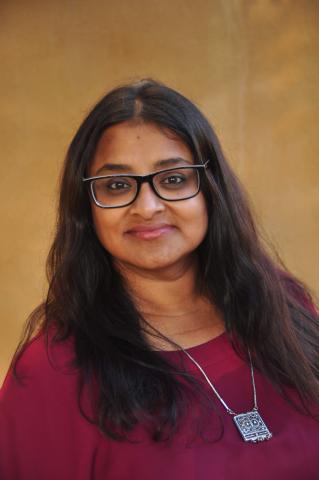In celebration of May being Asian Pacific American Heritage month, Palo Alto University is proud to be recently designated as an
Asian American and Native American Pacific Islander Serving Institution (AANAPISI).
PAU Adjunct Professor,
Moitreyee Chowdhury, LMFT, LPCC, earned her master’s degree in counseling from PAU in 2018 and is now part of the PAU faculty specializing in multicultural counseling. Chowdhury spent the first 26 years of her life in India and offers her perspective on the AANAPISI designation as a South Asian woman at PAU.
“To understand Asian culture, you have to understand community,” says Chowdhury. “In mental health, we follow a lot of European norms because the U.S. is informed by European culture, but this often may not be aligned with the diversity of cultures within Asia.”
PAU qualified for the AANAPISI designation because the University has an undergraduate enrollment of 10 percent Asian American or Native American Pacific Islander. This designation allows PAU to apply for federal grants to recruit and support the success of Asian American students.
“I think the best way to serve Asian American students with these grants would be to build a community center. A place where students, faculty, and staff could hang out and talk freely about wellness,” says Chowdhury. “There could be therapists on hand for those who want this type of support, but the overall purpose of this center would be to create a space where a student and a professor could have a cup of coffee and just be real with each other.”
Cultural Attunement vs. Cultural Competence
Chowdhury is teaching “Multiculturalism” this spring semester, which is one of her favorite classes to teach. This course will cover topics of racism, privilege, oppression, and how counselors can become more culturally attuned to their clients. Chowdhury believes that it’s impossible to become fully competent in a specific culture, therefore she uses the phrase “cultural attunement” rather than cultural competence.
“I think the word competence in the context of culture, is a myth,” Chowdhury says. “You cannot become competent in a culture. I’m not even competent in my own culture! I prefer to use the terms cultural attunement or cultural humility.”
Chowdhury shares many ways in which a counselor can become more culturally attuned to their Asian American clients. Along with building community, understanding that the Asian culture values the mind-body connection as a pathway to wellbeing. Chowdhury also encourages counselors to be careful about what language they use while working with Asian clients.
“Word choice is important to be culturally attuned. Words like ‘therapy’ and ‘depression’ can be very stigmatizing for the Asian American culture,” says Chowdhury. “Instead of using these words, that can feel like labels, we can say that we are offering ‘wellness support’ instead of therapy.”
Chowdhury would like to conduct research on how counselors can become more culturally attuned to their clients with their style of communication—but, not just with their words.
“When a counselor has curiosity and humility, and they pick up on the non-verbals from their client, they may become more culturally attuned,” says Chowdhury. “During counseling sessions, thoughts and feelings are often revealed in the non-verbal rather than the verbal communication.”
Chowdhury also emphasizes the importance of understanding that all people have multiple cultural identities, i.e., one person could have the identity of being oppressed as well as having privilege. Chowdhury encourages her students to be curious about the intersectionality of different cultural identities within their clients.
“Growing up as a female in a patriarchal society, I was oppressed, but I had the opportunity to go to college, so I’m also privileged. When I feel that I am oppressed, it’s important to identify my privileges at the same time” says Chowdhury. “It’s also important for me to remember that a teacher cannot teach privilege, we can only create space for students to turn inward, to introspect. It’s a self-identity.”
From Artist to Professor
Chowdhury grew up in a teacher’s colony in Delhi, India, and was raised to always be curious and try new things. She earned a Bachelor of Fine Arts degree in 1999 and taught art classes for 13 years in India and the U.S. She also studied German and completed a three-month internship at a theater in Germany. At the age of 26, she moved to California, and continued working as an artist for many years before coming to PAU in 2016.
One of her most impactful creations was a group exhibition of paintings and spoken word entitled “Shifting Borders”, in which she shares her experience immigrating to the U.S. from India with other artists, musicians, and writers. This presentation inspired Chowdhury to explore the many facets of the human condition, which motivated her to pursue a master’s degree in counseling at PAU.
As a PAU student, Chowdhury was inspired by the course work and her professors. She sensed that her professors loved teaching and were passionate about their subject matter. Chowdhury had such a positive experience as a student that she came full circle and joined the PAU faculty last year in the counseling department.
“I feel completely at home at PAU and I’m very passionate about the work I’m doing,” says Chowdhury. “I had been searching all my career for something right, but when I came to PAU, I finally felt like I had arrived.”


